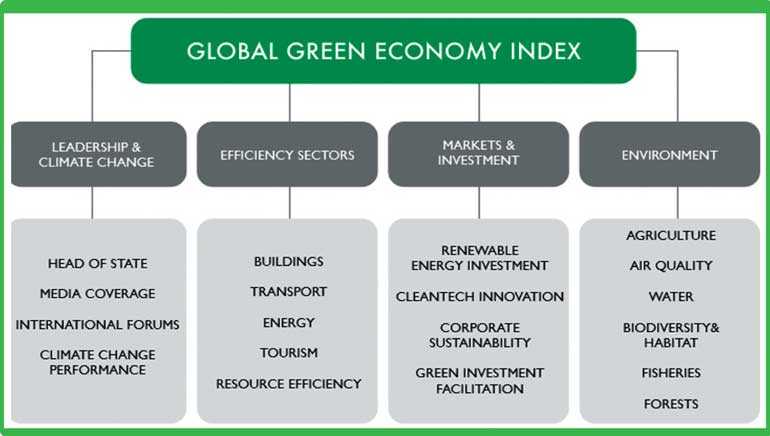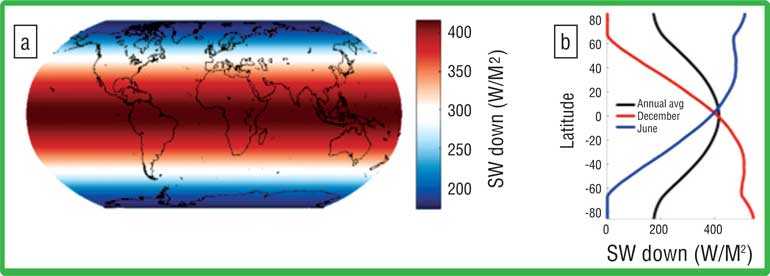Friday Jan 09, 2026
Friday Jan 09, 2026
Wednesday, 11 September 2019 00:00 - - {{hitsCtrl.values.hits}}


The arguments surrounding the MCC Compact are numerous and diverse. There are many advocates of the Compact including Advocata, Pathfinder, Dr. G. Vignarajah, etc. who have already contributed to newspapers, and also professionals, academics and top public servants. But right now, it has been put on hold by the President saying that it would be better left to the new government to decide. At this  moment it is the wisest decision that could be taken. I strongly believe that the President owes it to his countrymen not only as the President of the country, but also as the Minister of Environment.
moment it is the wisest decision that could be taken. I strongly believe that the President owes it to his countrymen not only as the President of the country, but also as the Minister of Environment.
I first got into discussing Environmental Aspects of businesses about 25 years ago and ever since then I have made contributions in setting up viable and strong Environmental Management Systems at some dynamic corporates in Sri Lanka. In spite of that, I did not indulge in this conversation earlier in the belief that there are enough and more administrators and technocrats who could direct the Sri Lankan polity to a wise decision.
In the meantime, I was doing my own desk research on climate change with very specific reference to Sri Lanka and its vulnerability to climate risk. Then I saw strange things happening and all of a sudden, news items started appearing in papers announcing we have been elevated to the category of upper middle income country list. Then the new president of the premier trade chamber sounded out a request for some more time to consider the Compact and present their viewpoints. The Prime Minister responded saying that this had been discussed with all parties and the chamber should not be politicised. Having known the chamber president from the time I did ISO 9001 consultancy for Dialog to be such a remarkable corporate leader, I thought of studying this compact a bit more closely. Thus, I am writing on this project.
According to what I have inferred, the gracious benefactor USA wants to give us a grant of $480 million in valid currency to improve the transport infrastructure (up to $350 million) and rationalise land administration (another $67 million) so that we can enhance our overall productivity.
Why we should not be surprised – 1
I would not be surprised by this generosity. In fact, I have been suggesting that we ask for this since 2014. It was in 2014 that I met a Senior Deputy Governor of the Central Bank and suggested we request USA to write off the debt of Rs.35.2 million which we owed them at that time. What the SDG of CB told me was that we were maintaining an immaculate record of not missing out on even a single loan instalment which they don’t want to smear. My reasoning for that request was we were sending tens or hundreds of STEM graduates to USA every year and they would have spent billions of dollars to generate them if they were to do so. In 2008, well-known US business leaders like Charles Holliday, Ursula Burnes, etc. were talking about how the lack of STEM graduates had hampered US research into energy and related areas. So, when we send STEM graduates to USA every year, we are sending them ready-made graduates ready to work from the following month. If they were to generate those graduates themselves, they would have had to spend something between $2 to 5 billion during the previous 20 years, providing milk, bread etc. to the expectant mother, day care, Medicare, education etc. and with a probability of about one out of every 100 children entering Grade 1 becoming a STEM graduate. A probability that even be much less.
Why we should be not be surprised – 2
On the other hand, we should not be surprised because President Trump is in a buying /acquiring mood. He is offering to buy Greenland, which desire disturbed his relationship with Denmark and prevented a planned visit. Obviously he wants to expand. Even with respect to Puerto Rico, they have been following a dubious type of strategy. USA has bought land on five occasions in the past and offered to buy one very recently; and at least in one instance it was not adjoining land. With this background of US Presidential thought processes, don’t ever believe that President Trump would donate $ 480 million to make your life easier and rosy, especially when you are so far away and he is such a frugal President.
Why we should be surprised – 1
There are a few reasons as to why we should be surprised. First and foremost is the inward-looking attitude of its current president. President Trump is not somebody who would dole out money that generously. We have not yet forgotten how he was putting checks and controls even over the funds they were releasing to some crucial activities to the east of USA. He wants the key stakeholders to account for every dollar spent overseas.
Then there is this funding for road infrastructure. I read that a part of this funding – $140 million - will be to upgrade 131 km of roadways. Another $ 160 million will be used to optimise efficiency of 205km of urban road networks amongst other things. I can’t imagine the US so readily giving us money to improve road infrastructure here when maintaining the road infrastructure in USA has become such a problem. Why do I say this?
It was at the launch of American Society of Civil Engineer’s “Five Guiding Principles for Critical Infrastructure” that President Barak Obama said that every year 14,000 Americans die due to road accidents arising from the poor condition of US roadways. In 2015 or so ASCE gave a D- grading and only 18 marks for US road infrastructure.
In fact, they find it difficult to maintain that road infrastructure. Generally, a certain fraction of the money received on sale of gasoline is expected to be collected and used to improve road infrastructure. This particular fund is currently running into difficulties. And they want to give us money to improve our road infrastructure.
I have been travelling to all corners of Sri Lanka during the last 14 months and that included from Karainagar, Mannar, Trincomalee, Batticaloa, etc., or almost on all the interprovincial roadways. If there was one stretch where I wished it were better, it was the stretch from Badulla to Passara.
Why we should be surprised – 2
If we look at the last 20 years, as per CBSL Annual reports, we have not been receiving any loan funding from USA for our development projects. The loan amount we owed to USA has been gradually decreasing and even last year, it decreased by Rs. 4.4 billion. If this liability has increased during any given year that would have been due to an increase of rupee value arising from a depreciation of the rupee.
But they have been giving us grants throughout that period. Even last year they granted us Rs. 453 million and in 2016 another Rs. 3.6 billion. The bulk of these has been for upgrading education, the benefit of which they were receiving almost every year. Therefore, this astronomical figure of Rs. 81 billion grant is a real surprise for us. If there is any one reason which could have contributed to this, it would have been our getting closer to the People’s Republic of China due to their funding of our development projects. I believe even Dr. Vignarajah was hinting at that. PRC has been giving us loans throughout for different projects. Even in 2018 they had given us Rs. 196 billion, excluding what they had given to State-owned business enterprises.
Then they want to rationalise our land administration to improve our land productivity. It is ironic that we in Sri Lanka with 21 million population and 65,000 sq.km land area, with no such discovered and utilised resources like gold, coal, oil or gas generates a per capita GDP of $65.61 per 1000 sq.km, while USA with their near 330 million people in more than nine million square kilometres containing coal, solid gold, liquid gold and even gaseous gold in the form of natural gas generates only a meagre $6.36 per capita per 1000 sq.km. And they want to help us to improve our land productivity. Do you believe them? Sri Lankan intelligentsia should understand that we cannot follow the same development pathways adopted by other countries. We need to be mindful of restrictions imposed on us by our location vis-à-vis the equator.You may also be surprised that our road density is 148 km/ 100 sq.km while theirs is only 68 km / 100 sq.km.
When a cyclone hits Florida or New Orleans, they have another nine million square kilometres to run to and we only have the ocean. In the whole of USA with 40 + states, most of which are much larger than Sri Lanka, there are only five states – Illinois, Ohio, Pennsylvania, Indiana, and New Jersey – with a road density higher than ours. All of them are at or above 370 N latitude, thus receiving much lower solar radiation than us. (See Fig 1.)
The Constraints Analysis needs to be redone
The proponents of the package mention that the project has been framed after a carefully concluded constraints analysis as per HRV’s growth diagnostic methodology. This methodology, named after Ricardo Hausmann, Dani Rodrik and Andres Velasco, is said to have a particular strength when compared with other tools in that it recognises the fact that “every country is different and one needs to assess the available evidence to identify country specific problems that most constraint growth” known as binding constraints.
Their current design of the compact is based on the Constraints Analysis they published in 2017; and most probably done in 2016. But fortunately or unfortunately, new evidence has come to light since then which would seriously question the previous binding constraints and bring in new ones.
Climate risk vulnerability of the country
In 2015, Sri Lanka was 98th in the Munich Re’s Climate Risk Index listing. In 2016 it became the 4th and in 2018 it became the 2nd, behind Puerto Rico which became almost devastated in 2017. A very broad analysis as to why we became so vulnerable in a world where many others emit far more greenhouse gases led to the conclusion that it is due to four main reasons, two natural and two man-made. These four reasons are (a) our closeness to the equator, (b) large scale air circulations affecting Sri Lanka, (c) our road density and (d) our GHG emissions per unit area. This analysis clearly showed that Sri Lanka at 70N and subjected to Hadley and Walker Circulations cannot have the same road density and GHG emission levels like in Germany, England, Japan or USA’s North Dakota. The figure given here shows that we receive almost double the solar radiation received by Germany, England or North Dakota and as such a given area of road surface in Sri Lanka would emit nearly twice the long wave radiation emitted by the same road surface area in one of the above mentioned countries. With the same GHG concentration in the atmosphere we would receive far more reflected radiation leading to global warming.
Hausmann, et al need to take this binding constraint – I believe this condition was not within their frame of reference earlier – and redo the analysis. In view of the above, our latitude at 70N, being subjected to these air circulations and having reached a dangerous road density are all binding constraints that must be considered by them.
What the World Bank says
It is not only Munich Re which talks about the seriousness of our vulnerability to climate risks. In April 2018, Muthukumara Mani of the World Bank came to Sri Lanka and presented a book titled ‘Hot spots in South Asia’ to the Secretary of Ministry of Environment and Presidential Advisor Prof. Mohan Munasinghe. This book very clearly stated that we are the most vulnerable country to climate risk in the whole of South Asia, with Bangladesh in the second place, and that road density is a key characteristic which has put us there. Again, out of the countries in South Asia we are the closest to the equator.
In summation, what is implied from these two findings by two independent reputed global entities is that Sri Lanka is highly vulnerable to climate risk and it is mainly due to its closeness to the equator, its high road density and GHG emissions per unit area. In view of this, we need to carry out a new constraints analysis before making recommendations for the way forward. I strongly suggest that Hausmann et al redo the constraints analysis and make a fresh set of recommendations.
Impact on the environment grossly neglected
This program has been in the planning phase for a very long period (for more than 12 years according to one statement) but there is no evidence of any environment-related study been done on the same. Pathfinder mentioned some government agencies which had been involved in related discussions but neither Ministry of Environment nor any other environment-related entity were in that list. This clearly shows the contempt with which MCC looks at the Sri Lankan environment – nothing surprising about a US entity with US treasury participation – and it may have stemmed from the US President’s own contempt for environmental agencies like the EPA.
This could lead to a very bad example for other projects and Sri Lanka will slide very fast to an environmental abyss. I strongly suggest that the aforementioned decay of our environmental concerns be immediately remedied.
For a project like this, a normal Environmental Impact Assessment may not be sufficient. We should start evaluating our performance as a state with respect to environmental issues in order to protect ourselves from further environmental deterioration. We need to come out of this sorry state of been the most vulnerable country in the region and the second-most in the world.
Global Green Economy Index
In order to get out of our current environmental plight, we might have to follow a systematic approach. There would be no point in repenting later that we could have done this, we could have done that etc. Instead, I strongly advocate we follow a suitable environmental index like the Global Green Economy Index (GGEI) and evaluate all major future projects based on how they would impact GGEI.
GGEI looks at a country or how the country performs with respect to the environment and climate change-related aspects on four main criteria: a) Leadership and climate change, b) efficiency sectors, (c) markets and investment and, (d) environment. Each of these are subdivided into sub-categories as given in the chart. (See Fig 2.)
By bringing a framework like this we could ensure that the country’s leadership will not allow the quality of our environment to slip any further down. We should also have a set of guiding principles to lessen our vulnerability. If we don’t do this today, it will be our grandchildren who will suffer and curse us in the future.
Conclusion
It is of paramount importance that we somehow or other to prevent Sri Lanka being the most vulnerable country in the world to climate change. We should subject this MCC Compact to a thorough Environmental Assessment. In doing that I suggest that we review the impact of the Compact on the relevant aspects in the GGEI framework.
Of course, even before doing so, we should request Hausmann et.al. to redo their Constraints Analysis Study and publish their findings in view of our worsening Climate Risk Vulnerability as identified by two global authorities. We must promise Hausmann, et.al and MCC Compact promoters all necessary support in doing this analysis promptly.
I am not sure as to whether they were talking about our environmental constraints as depicted by enhanced climate vulnerability, our demonstrated higher levels of incident solar radiation when compared to other countries, etc. when they talk about binding constraints. It is in fact, immaterial for us; they need to be taking these constraints into consideration and probably improve their analysis methodology in the process.
(The writer is Managing Director, Somaratna Consultants Ltd.)